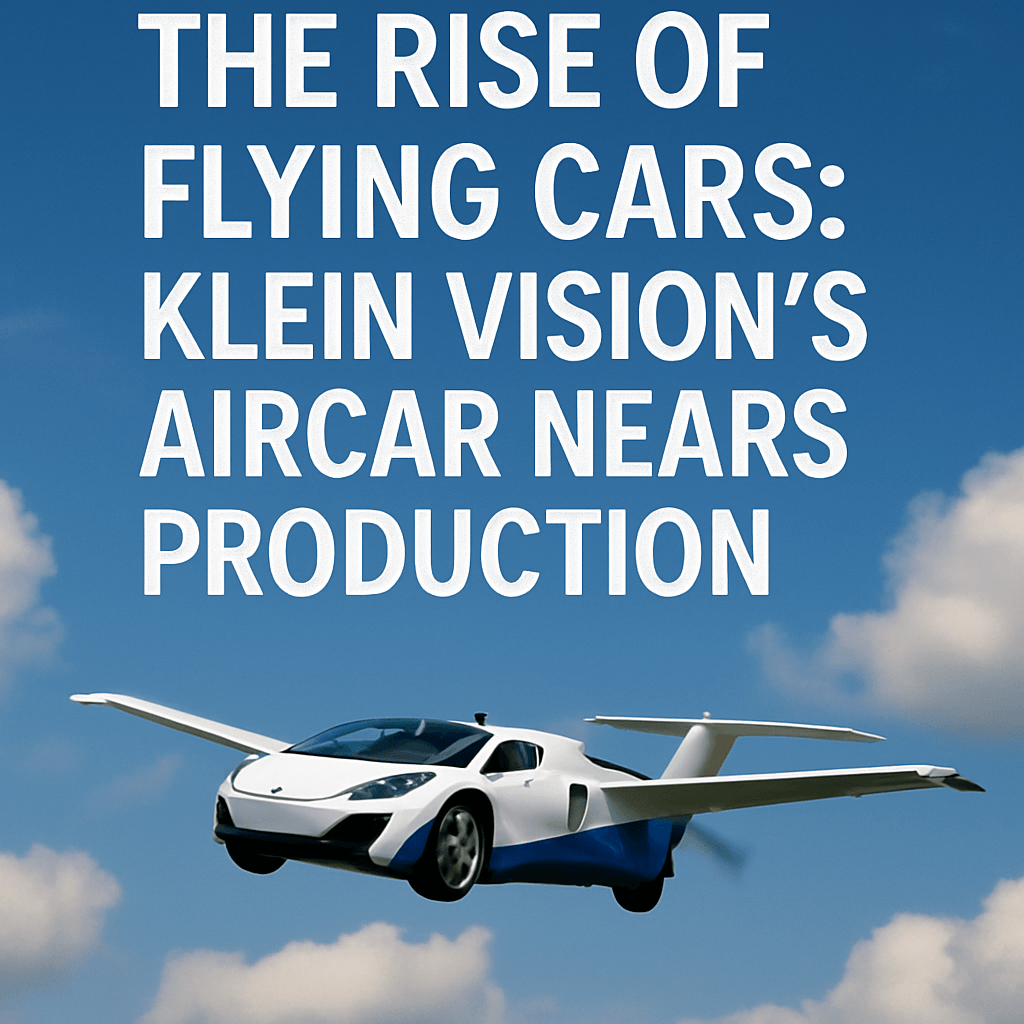The Rise of Flying Cars: Klein Vision’s AirCar Nears Production

In a development that recalls the futuristic visions of The Jetsons, the concept of a fixed-wing flying car is moving closer to reality. Its hefty price tag, estimated between $800,000 to $1.2 million for a two-seat model, may label it as part of the “billionaires’ toy club” for now. However, the transportation and aviation sectors are shifting their perceptions, investing copious resources to explore and develop this once fanciful technology.
Recent Milestones
In early May, Slovakian firm Klein Vision showcased a production prototype of its AirCar during an event in Beverly Hills. The earlier iterations of the AirCar, which have been in development for over three decades, received airworthiness certification from the Slovak Transport Authority after logging over 170 flight hours with numerous successful takeoffs and landings. With certification for the new prototype anticipated in September, Klein Vision aims to commence production next year, and they have already sold manufacturing rights for specific territories in China.
A Unique Design
Unlike other flying car prototypes primarily based on VTOL (Vertical Take-Off and Landing) technologies, the AirCar is a complete dual-use vehicle. It seamlessly transitions between a road vehicle and a fixed-wing aircraft, requiring operators to hold both a driver’s license and a pilot’s license for operation. Klein Vision co-founder Anton Zajac claims, “You can take off from any airport with a relatively short runway—or even from a stretch of green grass. If you have 600 feet of grass, you’re good to go.” The conversion from car to aircraft takes less than two minutes, further emphasizing its innovative essence.
Technical Specifications
- Flight Range: Up to 600 miles
- Engine Power: Three engine models, ranging from 280 to 340 horsepower
- Fuel Capacity: Three gas tanks with a total capacity of 160 liters
- Ground Speed: Exceeding 120 mph
- Driving Range: Approximately 500 miles
The cost may seem prohibitive, particularly given the complexities of obtaining a pilot’s license. However, Zajac notes a potential market, highlighting that there are around 250,000 small aircraft registered in the U.S. If AirCar manages to replace even 5%, the resulting business opportunity would be significant.
Exploring Practical Applications
The practical implications of AirCar extend beyond mere luxury. Its ability to effortlessly switch between land and air travel offers novel solutions for reaching remote areas with limited ground infrastructure. Urban planners and transportation experts have underscored the craft’s potential for enhancing connectivity, especially in rural communities where road access is limited.
However, industry experts like Jim Dukhovny, CEO of Alef Aeronautics, argue that requiring an airport for takeoff does not wholly resolve the persistent problem of rising travel times due to urban congestion. Dukhovny explains, “We have been following AirCar’s progress and are truly impressed by the engineering achievements of Klein Vision,” while emphasizing the need for innovative solutions that resonate with the rapid evolution of city life.
Market Outlook and Regulatory Challenges
The emergence of flying cars presents a unique landscape for regulators. Air traffic management remains an unsolved puzzle, especially after recent airspace incidents raised alarms regarding congested airways. Experts like Kyriakos Kourousis, an airworthiness authority from the University of Limerick, stated, “The recent Potomac River accident illustrates the complexities and implications of increasing flight volumes, necessitating a robust strategy for managing crowded skies.”
However, Klein Vision’s dual compliance with both automotive and aviation regulations may grant them a head start in this competitive field. The market projections are impressive; J.P. Morgan estimates that the eVTOL market could reach a staggering $1 trillion by 2040, with players like Klein Vision positioning themselves strategically to capture substantial market share.
Comparative Technologies on the Horizon
While AirCar’s progress is noteworthy, it is important to recognize the other players in this emerging sector. For instance, companies like Samson Sky, Pal-V, and Oregon-based companies are also developing their variants of flying vehicles. Samson Sky’s Switchblade aims at solving regional travel congestion through innovative design and utility.
Sam Bousfield, CEO of Samson Sky, asserts, “The purpose of the Switchblade is to enable individuals to travel on their schedule to over 10 times as many locations as commercial airlines, with less hassle and in under half the time.” With flight tests scheduled for later this year, their vehicles are expected to cater to both recreational and utility-based markets.
Conclusion
As Klein Vision advances towards final production and commercialization of the AirCar, we stand on the precipice of what may become the next revolution in personal transportation. While the notion of flying cars may have once seemed stranger than fiction, the industry is rapidly proving that the skies might soon be accessible to the average consumer. With ongoing advancements and regulatory developments, it’s clear that we are no longer living in the realm of just science fiction.
“I think the fact that we have a flying car is a miracle,” Zajac states, reflecting on a technological dream that is on the brink of becoming reality.
Source: fortune